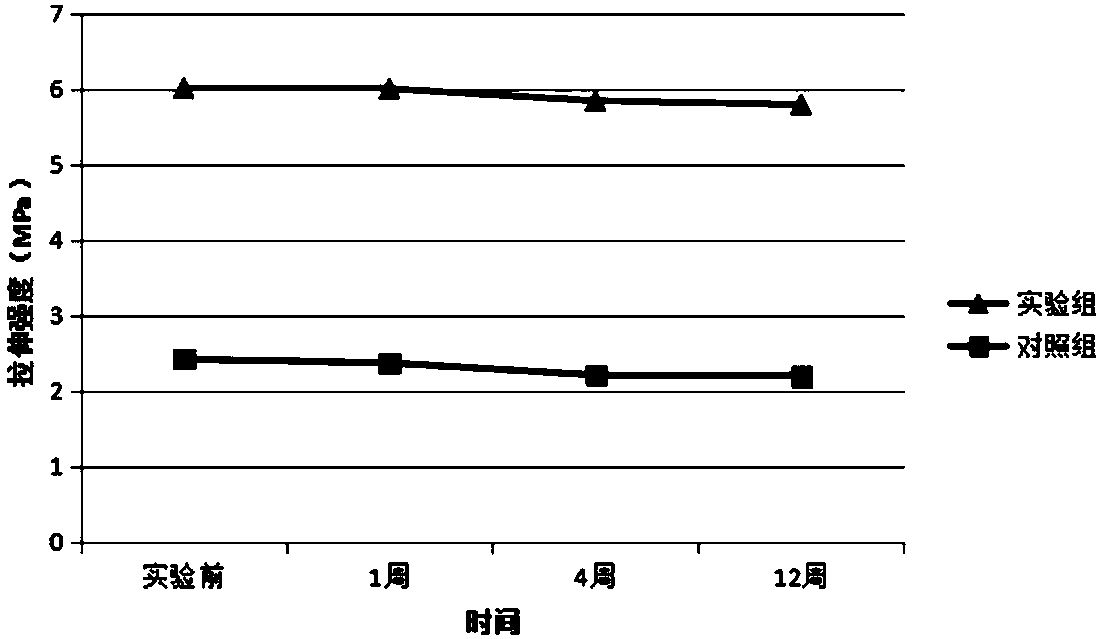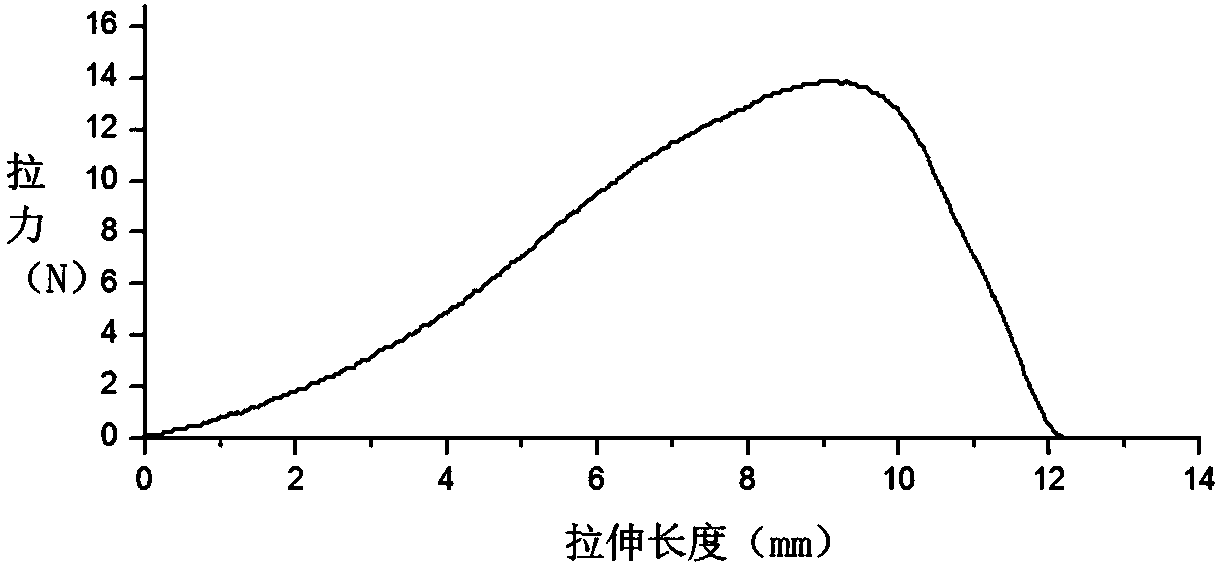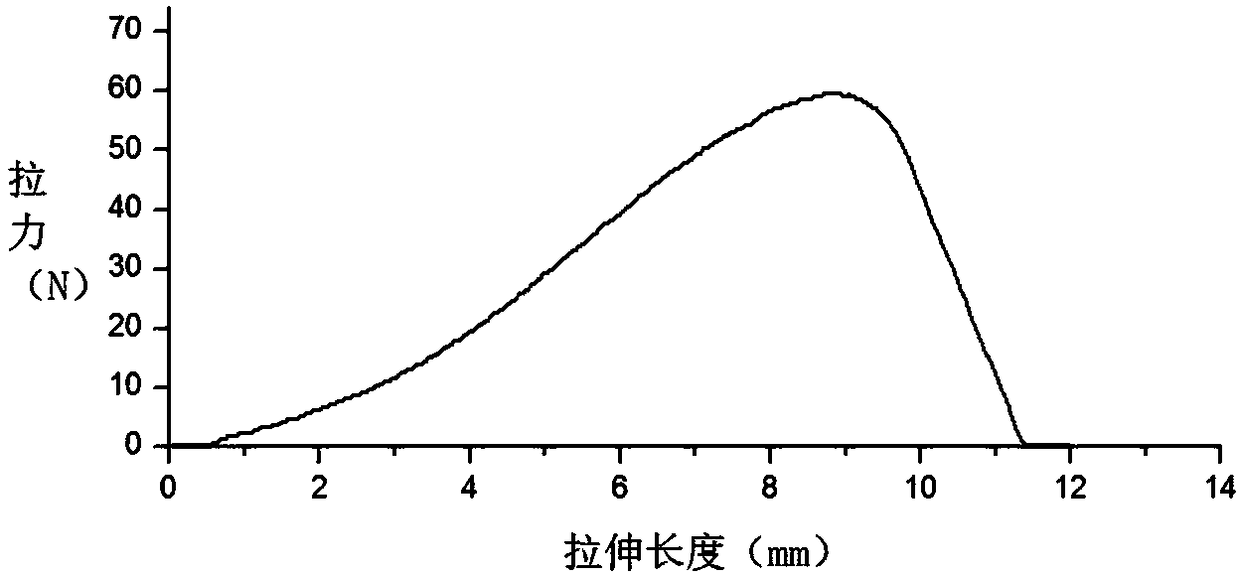Hernia patch, preparation method and application thereof in herniorrhaphy
A water-for-injection, allogeneic technology, applied in the field of tissue engineering of biomedical materials, can solve the problems of residual antigenic components, inconvenient storage and transportation, low elasticity, etc. Effects of elasticity and toughness
- Summary
- Abstract
- Description
- Claims
- Application Information
AI Technical Summary
Problems solved by technology
Method used
Image
Examples
Embodiment 1
[0062] Example 1 Preparation method of acellular allodermal matrix
[0063] Put the allogeneic leather raw material into the concentration of 0.2g / L phospholipase and 0.1g / L trypsin solution, the pH value of the enzyme solution is 7.0, the temperature is 37°C, shake at 100rpm for 2 hours, replace the enzyme solution once, repeat this process once, The semi-finished product A is obtained; the phospholipase is a mixture of phospholipase A1, phospholipase A2, phospholipase C and phospholipase D according to the mass ratio of 1:1:1:1.
[0064] The semi-finished product A was taken out, soaked in physiological saline, and oscillated 3 times, each time for 2 hours, with an oscillating speed of 80 rpm and a temperature of 2°C to obtain a semi-finished product B.
[0065] Put the semi-finished product B into the TritonX-100 solution containing 0.2g / L, 50KHz, 220W, ultrasonic for 5 minutes, soak for 3 hours, repeat this process 3 times, and get the semi-finished product C.
[0066] Th...
Embodiment 2
[0076] Example 2 Preparation method of acellular allogeneic dermal matrix
[0077] Put allogeneic leather raw materials into 0.1g / L phospholipase and 0.1g / L trypsin solution, the pH value of the enzyme solution is 7.0, the temperature is 37°C, shake at 100rpm for 2 hours, replace the enzyme solution once, repeat this process once, The semi-finished product A is obtained; the phospholipase is a mixture of phospholipase A1, phospholipase A2, phospholipase C and phospholipase D according to the mass ratio of 1:1:1:1.
[0078] The semi-finished product A was taken out, put into a container filled with physiological saline solution, soaked in physiological saline, oscillated 3 times, each time for 2 hours, the oscillation speed was 80 rpm, and the temperature was 2°C to obtain the semi-finished product B.
[0079] Put the semi-finished product B into the SDS solution containing 0.2g / L, 10mM EDTA, 50KHz, 220W, ultrasonic for 7 minutes, soak for 2 hours, repeat this process 3 times, ...
experiment example 1
[0089] Experimental example 1 Detection of biological properties of acellular allogeneic dermal matrix
[0090] Biological properties such as the mechanical characteristics of the acellular allogeneic dermal matrix (i.e. finished product K, hernia patch) prepared in Example 1-2 and the acellular allogenic dermal matrix (control group) produced by a domestic enterprise are tested, and the performance index Including tensile strength, suture strength, bursting strength, tensile elongation, water content, and DNA residue. The specific test results are shown in Table 1. The results show that the product of the invention has good toughness and elasticity, is convenient for suturing and pulling, and has sufficient tensile strength, which can meet the treatment needs of hernia repair patch.
[0091] Table 1 Test results after rehydration of acellular allogeneic dermal matrix
[0092] Acellular Allodermal Matrix
PUM
| Property | Measurement | Unit |
|---|---|---|
| Tensile strength | aaaaa | aaaaa |
| Suture strength | aaaaa | aaaaa |
| Bursting strength | aaaaa | aaaaa |
Abstract
Description
Claims
Application Information
 Login to View More
Login to View More - R&D
- Intellectual Property
- Life Sciences
- Materials
- Tech Scout
- Unparalleled Data Quality
- Higher Quality Content
- 60% Fewer Hallucinations
Browse by: Latest US Patents, China's latest patents, Technical Efficacy Thesaurus, Application Domain, Technology Topic, Popular Technical Reports.
© 2025 PatSnap. All rights reserved.Legal|Privacy policy|Modern Slavery Act Transparency Statement|Sitemap|About US| Contact US: help@patsnap.com



